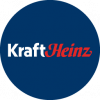ENTERPRISE BRANDS – CONSUMER PACKAGED GOODS
Meet dynamic consumer needs as they change faster than ever.
You need comprehensive, real-time insights into shopper influencers, behaviors, and opinions to keep up and solve for tomorrow. What could you do with a more complete view of all your buyers?
Omnichannel consumer insights in a changing world.
Discover what you don’t know with more trips, more channels and more CPG insights.
Omnichannel Visibility
All retail channels: from bodegas to big box to eCommerce.
Both Buy and Why
Purchase-triggered surveys link behaviors and attitudes.
Fast Insights
On-demand access to purchase data, updated daily.
We understand what others can't.
Omnichannel Panelists
Each panelist is tracked across all channels — which is the only way to understand switching.
eCommerce Coverage
Leading source of growth — 46% of all consumer buying is in non-traditional channels.
Technology-driven Speed
We can report within days, using % of households reporting.
Thank you!
A member of our team will get back to you within 24 hours. In the meantime, explore our content to get a pulse on the latest consumer and shopper insights trends.
CPG categories getting more.
More coverage. More insights. More growth.

BevAlc & Beverage

Food & Restaurants
Understand the omnichannel food marketplace and gain insight into private label, QSR, and non-traditional channels.

Health & Beauty
Discover what consumers are putting on and in their bodies, where they’re buying, and how they’re influenced by media consumption and online disruption.
Leading CPG brands and manufacturers trust Numerator.






Numerator OmniPanel
To keep pace with fast-changing consumer behavior, Numerator’s OmniPanel goes beyond traditional measurement to deepen your consumer understanding.
Our top solutions for CPG brands

Shopper Insights
Analyze shoppers based on their demographics, psychographics, media consumption habits and purchase behavior.

Verified Voices
TruVIew
Measure your market share across all channels and with consumer context — at the speed of the consumer.

CASE STUDY
CASE STUDY
BODYARMOR
Learn how BODYARMOR demonstrated to a major club and dollar retailer that there existed an immediate opportunity to increase sales if they began carrying BODYARMOR products.

CASE STUDY
Clif Bar
See how the Clif Bar team influenced retail partners’ product assortment and built strategic relationships with key retailers.
CASE STUDY
Reckitt Benckiser
Learn how the RB team saw an opportunity to move faster, be more nimble and improve category insights by applying their Upper Respiratory shopper segments to the Numerator OmniPanel.
Stay in the know.

INSIGHTS HUB
Generations Hub
Explore the distinctive shopping habits of Gen Z, Millennials, Gen X and Boomers. See how generational consumer trends shape today’s markets.

REPORT
Influencer & Celebrity Impact on Shopping Behavior
Influencer & celebrity impact on shopping behavior report dives into why shoppers buy these brands and breaks down the benefits and risks of leveraging public figures into brand building and marketing.

ARTICLE
2024 Beauty Industry Trends: Gen Z, Skincare, & More
Numerator shares the key beauty consumer trends that propelled the industry to record highs and what trends expect in the future for the beauty industry.
